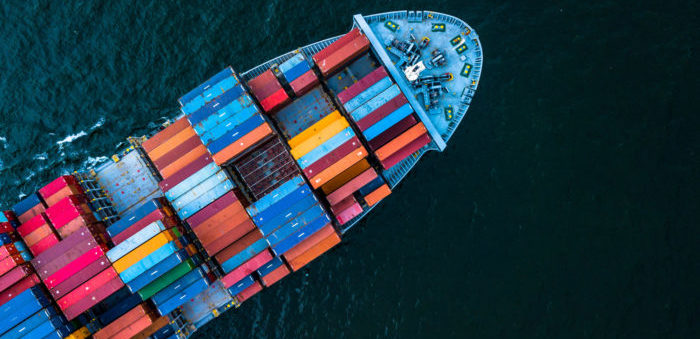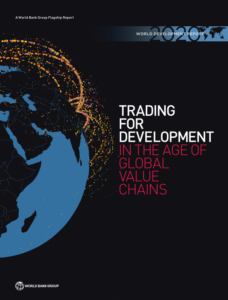The World Bank issued its “World Development Report 2020” focusing on the development of the global value chains, the changes that have come and are about to come and the effects of the value chains in global trade.
Overall, a global value chain breaks up the production process across countries. Firms specialize in a specific task and do not produce the whole product.
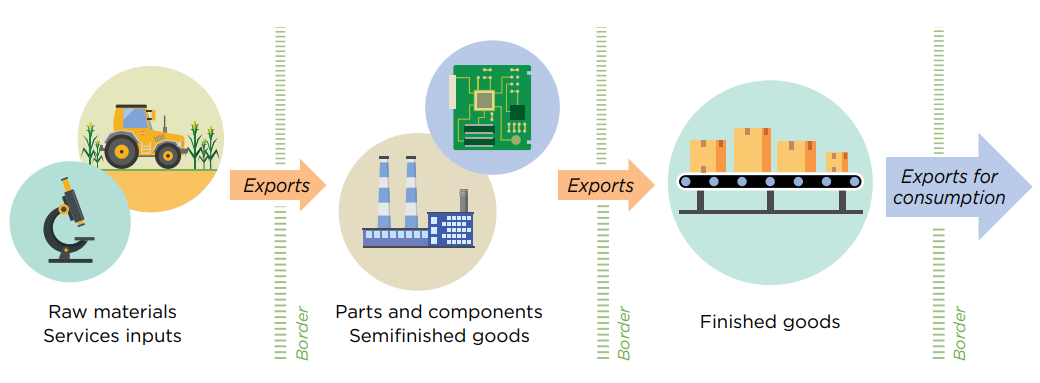
In addition, interactions between firms typically involve durable relationships. Economic fundamentals drive countries’ participation in GVCs.
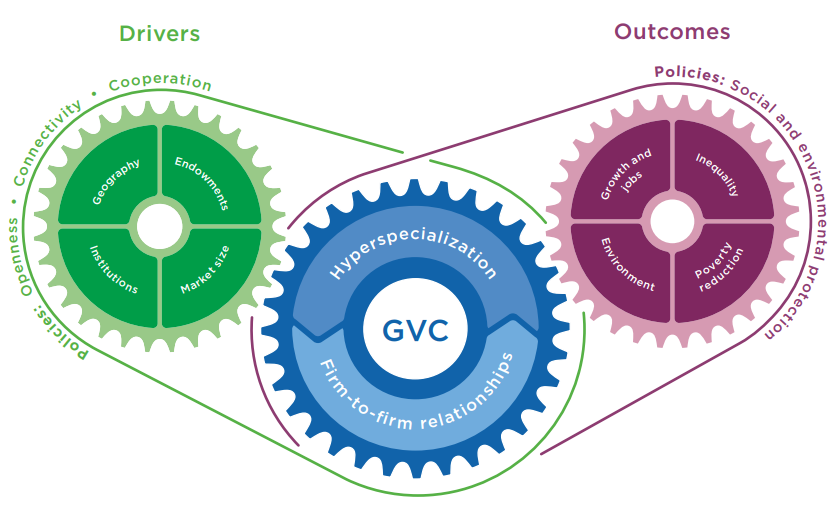
Today, global value chains hold the 50% of the global trade, showcasing an increase in the last 30 years helping poor countries grow faster. GVCs can boost inclusive and sustainable growth, provide better jobs and decrease poverty, under the condition that developing countries implement deeper reforms and industrial countries pursue open, predictable policies.
GVCs have existed for centuries. Yet, they showed an increase from the 1990s to 2007, in line with the technological advances in all sectors that have been developed, whereas lower trade barriers induced manufacturers to extend production processes beyond national borders.
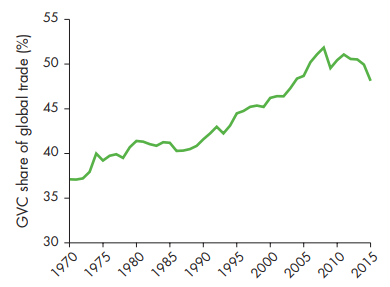
At the same time, two potentially serious threats have emerged to the successful model of labor-intensive, trade-led growth. First, the arrival of labor-saving technologies such as automation and 3D printing could draw production closer to the consumer and reduce the demand for labor at home and abroad. Second, trade conflict among large countries could lead to a retrenchment or a segmentation of GVCs.
The report states that GCVs can keep on forcing for sustainable and inclusive development if:
- Developing countries speed up trade and investment reforms, and improve connectivity.
- Advanced economies pursue open, predictable policies.
However, despite the positive effects of the GVCs in the global trade, they also come with some challenges and harmful effects on the environment. The main environmental costs of the GVCs have to do with the growing, more distant trade in intermediate goods compared with standard trade. Therefore, this leads to increased carbon dioxide emissions from all means of transportation, and increased waste, such as plastic, from the packaging of the products.
To explore more on the World Development Report 2020 click herebelow
































